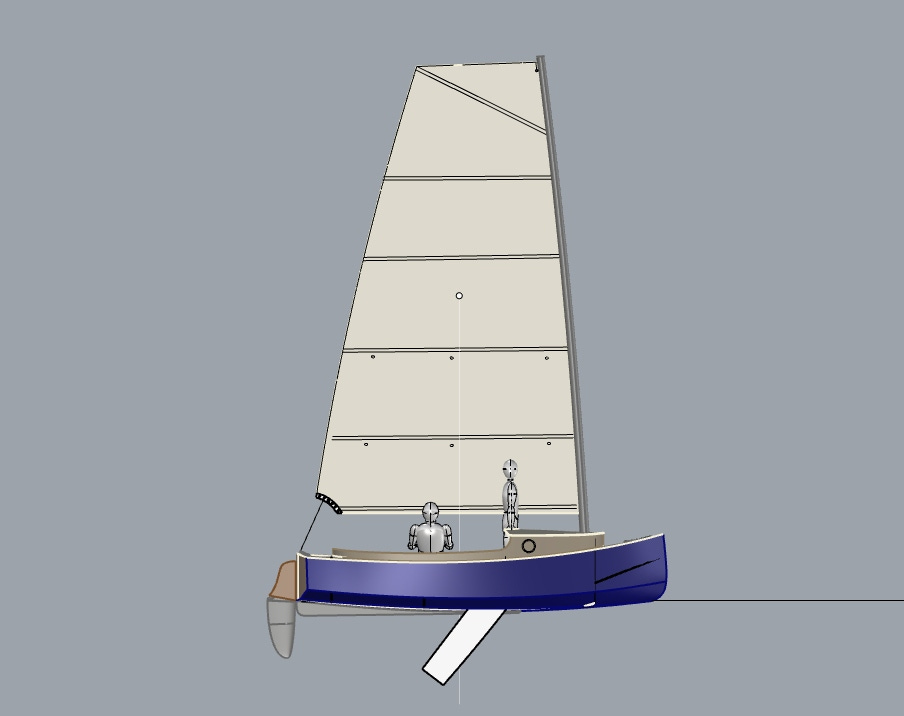As I wrote recently, Brandon Davis and I have been hard at work on a new kit-boat design we’re calling the Old Salt. Our design goals remain crystal clear: prioritize ease of use, comfort, and stability—so that an older sailor, possibly with some physical limitations, can handle trailering, mast-raising, rigging, launching, and sailing in a variety of conditions.
Many of you kindly shared your encouragement and interest—in fact, the response was overwhelming—and several of you also offered thoughtful design suggestions. While implementing some of these ideas would make the boat significantly more complex or expensive (and thus violate our original design brief), a few stood out as both smart and feasible.
One recurring concern was whether even an ultralight two-piece carbon mast might be too unwieldy to easily drop into a traditional keel-stepped mast box. We took this to heart and have incorporated a proven solution: the “ramp”-style mast box opening, similar to what we’ve used on later Scamps. This gives sailors two options—either drop the mast straight into the box or rest it on their shoulder and slide the base in “vault-style” before raising it upright.
Another common concern was staying balanced when standing at the cabintop or near the mast. While the Old Salt’s layout should minimize the need for this, we understand the worry. Taking inspiration from “thigh hooks” on driftboats and fishing vessels—frame-mounted bars that help anglers stay stable—we’ve added a hopefully similarly functional cutaway to the cabintop. This should provide added security and also bring the sailor a bit closer to the mast and foredeck.
The most frequent request by far was for a larger version of the Old Salt 14. While we’ve aimed to keep the boat as small as practicable to control weight and cost, comfort and stability are equally important. After much deliberation, we’ve decided to scale the Old Salt up to 15’3”.
This new length allows for higher, more comfortable cockpit seating, raises the cabintop overhang to 35” for better access and headroom, and makes an already stable hull even more so.
Not coincidentally, 15’3” is the longest hull side we can produce from two sheets of plywood—with only a single puzzle joint in the longest plank. This keeps the kit efficient and construction straightforward.
The slightly larger size shouldn’t significantly affect price or complicate trailering, launching, or handling.
Updated Specs:
LOA: 15’3”
LWL: 14’9”
Beam: 7’6”
Draft: 7” / 3’6”
Dry Weight: 425 lb
Designed Displacement (2 crew + gear): 1200 lb
Sail Area: 155 sq ft (+ optional Tequila Package spinnaker)
Next up: we begin the prototype build of the Old Salt 15. Thanks again for your support and feedback!







Still looking good at 15’, thanks for the update! Another humble suggestion, optional cockpit/boom tent professionally made? I can cut, glue, sand wood reasonably well but I’m not ready to learn how to sew a proper tent. Overnighting on the Old Salt will need that. Cheers!
I’m ready to place an order.